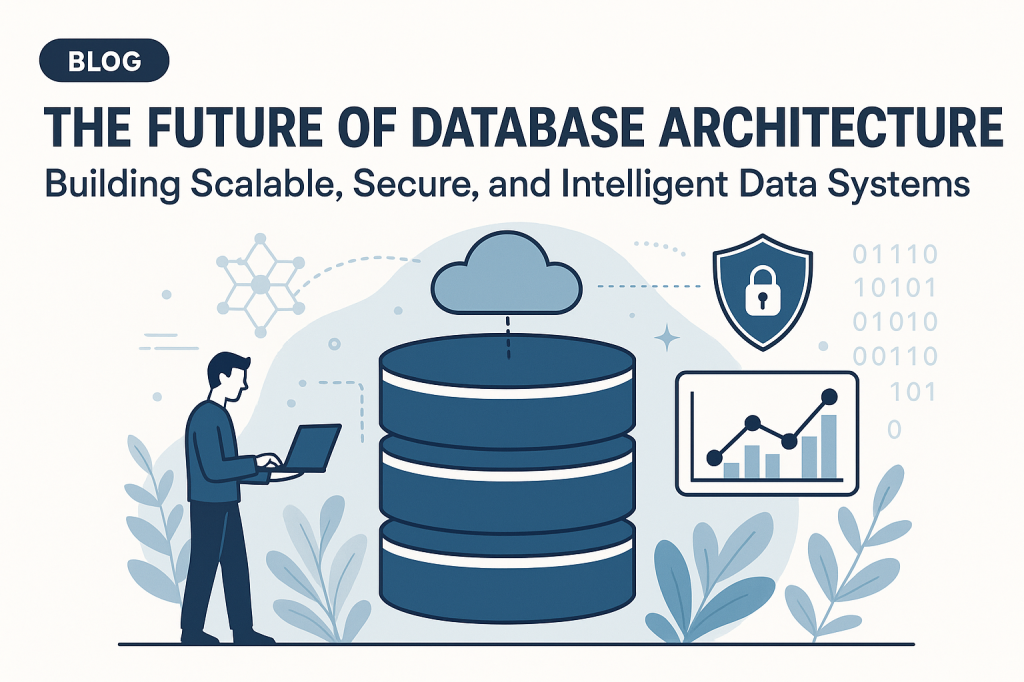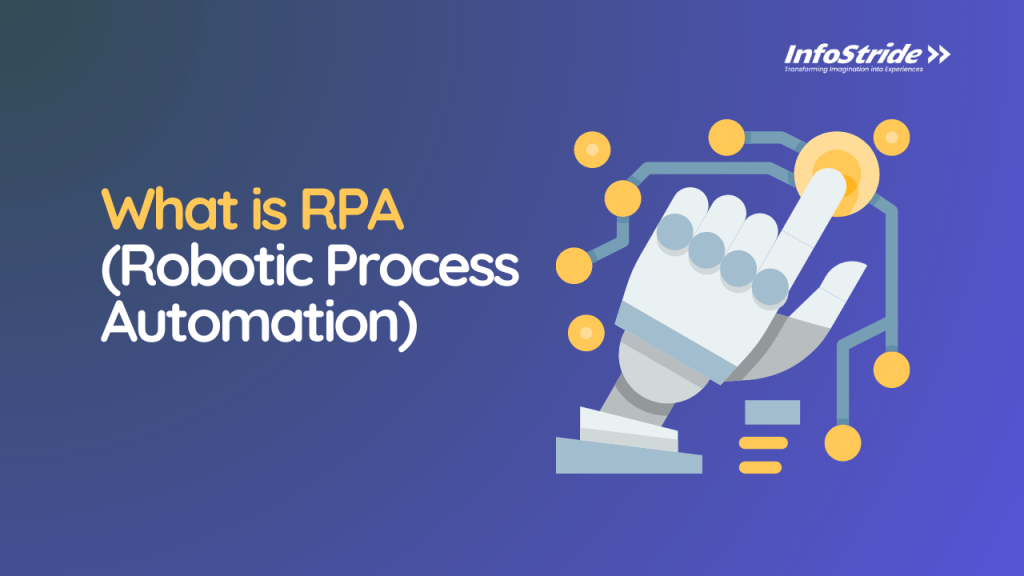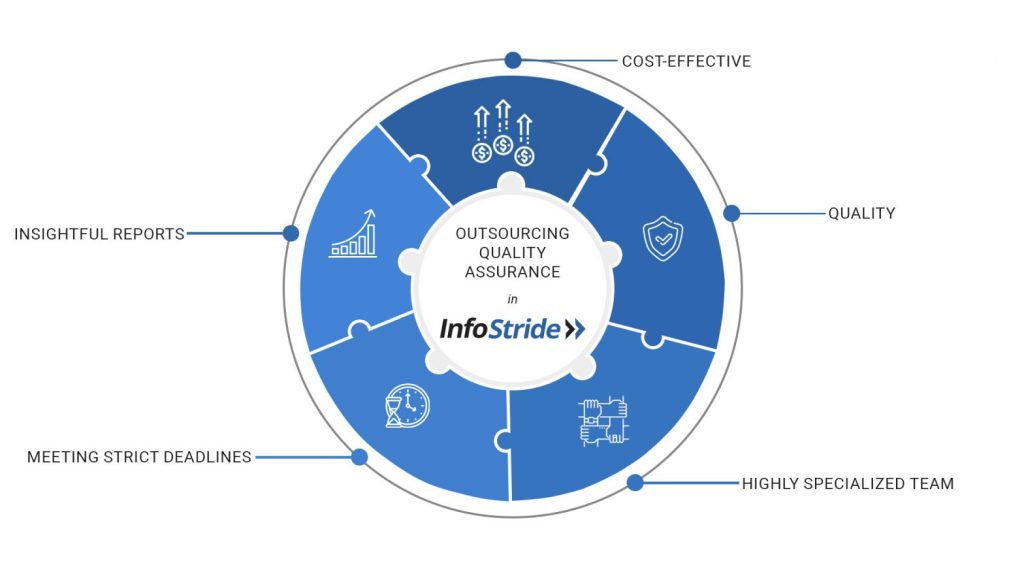Table of Content
Milestone: Empowering Learners Worldwide through an Innovative Business Model
Coursera: A Glimpse into Its Journey and Vision
Why Learners, Institutions, and Employers Choose Coursera: Unpacking the Value Proposition
Coursera Business Model: How The eLearning Platform Works?
Coursera Revenue Model: How Coursera Generates Revenue
How to Build an eLearning Platform from Scratch: A Step-by-Step Guide Inspired by Coursera
Interested in Building a Platform Like Coursera?
InfoStride: Your Partner in Building eLearning Platform Like Coursera
In today’s rapidly evolving educational landscape, Coursera has emerged as a trailblazer, redefining how education is delivered and accessed worldwide. Founded in 2012 by Stanford professors Andrew Ng and Daphne Koller, Coursera has grown from offering a few university courses to becoming a global leader with over 148 million learners. Central to this transformation is the Coursera business model, which leverages strategic partnerships with over 275 prestigious universities and leading corporations like Google and IBM. This model enables Coursera to offer a vast array of courses and specializations that cater to both personal and professional development needs.
Milestone: Empowering Learners Worldwide through an Innovative Business Model
Recently, Coursera celebrated a major milestone in its journey. In 2023 alone, it awarded over 2 million certificates, a testament to the platform’s success in equipping learners with essential skills for the modern job market. The Coursera business model not only supports individual learning but also plays a pivotal role in corporate and governmental upskilling initiatives. By partnering with over 2,500 companies and 200 government entities, Coursera delivers tailored learning solutions that address the evolving demands of the workforce. This innovative approach underscores Coursera’s significant impact on the global education sector, continually driving forward its mission to make high-quality education accessible to all.
Coursera: A Glimpse into Its Journey and Vision
History and Founding
Coursera was founded in 2012 by Andrew Ng and Daphne Koller, two visionary computer science professors from Stanford University. The idea took root when Ng and Koller recognized the potential of online education to democratize access to high-quality learning experiences. Inspired by their success with offering Stanford courses online, which drew massive global enrollments, they launched Coursera with the aim of expanding educational opportunities worldwide.
Initially, Coursera partnered with a few top-tier universities, offering courses that anyone with an internet connection could access for free. This innovative approach quickly gained traction, attracting millions of learners and prompting more institutions to join the platform. Today, Coursera collaborates with over 275 prestigious universities and companies, including Yale, the University of London, and Google, making it a leading force in the online education industry.
Mission and Vision
At the heart of Coursera’s operations lies a powerful mission: to provide universal access to world-class learning. This mission is driven by the belief that education is a fundamental right and a catalyst for personal and societal growth. Coursera envisions a world where anyone, regardless of location or financial status, can access high-quality educational resources to improve their lives and careers.
This mission influences Coursera’s business strategies in several key ways:
-
Inclusive Access:
Coursera offers a vast selection of courses and specializations across various disciplines, often for free or at a low cost. This approach lowers the barriers to education, ensuring that people from diverse backgrounds can benefit from top-tier learning experiences.
-
Partnerships and Expansion:
By partnering with leading universities and companies, Coursera expands its content library and enhances the credibility of its offerings. These collaborations allow Coursera to deliver not only academic courses but also professional certifications and full degrees, aligning with the needs of a global workforce.
-
Innovative Learning Models:
Coursera continually explores and implements new technologies and learning models, such as AI-driven personalized learning, to enhance the effectiveness and engagement of its courses. This commitment to innovation ensures that Coursera remains at the forefront of the evolving education landscape.
-
Global Reach:
Coursera’s mission to reach learners worldwide is reflected in its diverse range of languages and localized content. The platform is available in multiple languages, and Coursera actively seeks partnerships with institutions across different regions to better serve global learners.
Why Learners, Institutions, and Employers Choose Coursera: Unpacking the Value Proposition
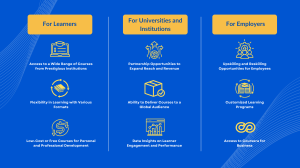
Coursera’s business model is built around delivering exceptional value to its key stakeholders: learners, universities and institutions, and employers. By catering to the diverse needs of these groups, Coursera has established itself as a leading platform in the online education industry.
For Learners:
-
Access to a Wide Range of Courses from Prestigious Institutions:
Coursera offers an extensive catalog of courses spanning various subjects, from data science and business to arts and humanities. These courses are created and delivered by top universities and industry leaders such as Stanford, Yale, Google, and IBM. This access to high-quality content from reputable sources enables learners to acquire knowledge and skills that are recognized and respected globally.
-
Flexibility in Learning with Various Formats:
Coursera provides multiple learning formats to suit different needs and schedules. Learners can choose from individual courses for specific topics, comprehensive specializations for in-depth expertise, and even full online degrees for career advancement. This flexibility allows learners to progress at their own pace and tailor their educational journey to their personal and professional goals.
-
Low-Cost or Free Courses for Personal and Professional Development:
Coursera’s freemium model makes high-quality education accessible to a broad audience. Many courses are available for free, with the option to pay for certificates that verify completion and enhance employability. Additionally, Coursera offers financial aid and scholarships for those who need it, ensuring that cost is not a barrier to learning.
For Universities and Institutions:
-
Partnership Opportunities to Expand Reach and Revenue:
Universities and educational institutions can partner with Coursera to broaden their reach beyond traditional campus boundaries. By offering their courses on Coursera, they can attract a global audience and generate additional revenue streams. This partnership also enhances their brand presence and reputation in the online education market.
-
Ability to Deliver Courses to a Global Audience:
Coursera provides universities with a powerful platform to deliver their content to millions of learners worldwide. This global exposure not only increases enrollment but also fosters diversity and inclusion in the learning community. Institutions can share their academic excellence with a broader audience, impacting learners far beyond their physical campuses.
-
Data Insights on Learner Engagement and Performance:
Coursera equips institutions with detailed analytics on learner engagement and performance. These insights help universities understand how their content is consumed, identify areas for improvement, and make data-driven decisions to enhance the learning experience. This feedback loop is invaluable for maintaining high educational standards and adapting to learner needs.
For Employers:
-
Upskilling and Reskilling Opportunities for Employees:
Coursera for Business provides employers with access to a vast array of courses that can be used to upskill or reskill their workforce. This is particularly important in today’s fast-paced and constantly evolving job market, where continuous learning is essential for maintaining a competitive edge. Employers can ensure their teams are equipped with the latest skills and knowledge necessary for success.
-
Customized Learning Programs:
Companies can tailor Coursera’s offerings to create customized learning paths that align with their specific organizational needs and goals. This allows for targeted employee development, enhancing the workforce’s capabilities in critical areas such as technology, leadership, and innovation.
-
Access to Coursera for Business:
Coursera for Business is a dedicated solution that provides enterprises with comprehensive access to Coursera’s extensive course library. This platform supports corporate training initiatives by offering flexible, scalable, and high-quality educational content. Employers can leverage this resource to foster a culture of continuous learning and professional growth within their organizations.
Coursera Business Model: How The eLearning Platform Works?
Coursera operates through a well-structured platform designed to provide seamless and flexible learning experiences for users worldwide. Here’s a detailed look at the Coursera Business Model, from the moment a user registers to the completion of a course or program:
Step-by-Step Process-to Using Coursera

1. Registration and Account Creation:
- Sign-Up Process:
New users start by visiting Coursera’s website or downloading the mobile app. They can create an account using an email address or sign in through their Google, Facebook, or Apple ID. This straightforward registration process ensures that users can quickly start exploring the platform.
- Personalization:
Upon signing up, users are encouraged to complete their profile and specify their learning interests. Coursera uses this information to tailor course recommendations, enhancing the user’s learning journey from the outset.
2. Exploring Courses and Programs:
- Course Catalog Browsing:
Coursera’s homepage features a searchable catalog of thousands of courses across various disciplines. Users can browse by subject, skill level, duration, and language, making it easy to find courses that meet their specific needs and interests.
- Specializations and Degrees:
For those looking for more structured learning paths, Coursera offers Specializations (a series of related courses) and full online degrees from accredited institutions. These programs are highlighted on the platform, allowing users to explore in-depth learning opportunities that align with their career goals.
3. Enrollment and Accessing Course Material:
- Enrolling in a Course:
Once a user selects a course, they can enroll immediately. Many courses are available to audit for free, providing access to most of the content. For those seeking certification, users can opt for a paid enrollment, which includes additional features like graded assignments and a shareable certificate upon completion.
- Starting the Course:
After enrolling, users can access all course materials, including video lectures, readings, and quizzes, directly from the course dashboard. Coursera’s interface is user-friendly, with clear navigation and progress tracking to help learners stay on track.
4. Engaging with Course Content:
- Video Lectures and Readings:
Courses typically consist of video lectures that users can watch at their own pace. These are often supplemented by reading materials, interactive exercises, and quizzes that reinforce learning and comprehension.
- Assignments and Projects:
Many courses include assignments or hands-on projects designed to apply the concepts learned. These assignments can range from multiple-choice quizzes to complex capstone projects, depending on the course level and subject matter.
- Peer Interaction and Community:
Coursera fosters a sense of community through discussion forums where learners can ask questions, share insights, and collaborate with peers from around the world. Some courses also feature peer-reviewed assignments, allowing students to provide and receive feedback on their work.
5. Completing the Course:
- Assessments and Exams:
To successfully complete a course, learners must pass various assessments, which may include quizzes, exams, and project submissions. The completion requirements vary by course but are clearly outlined in the course syllabus.
- Certificates and Credentials:
Upon meeting all course requirements, learners who have paid for the course or program receive a certificate. This digital credential can be shared on professional networks like LinkedIn or added to resumes, showcasing the learner’s achievement.
6- Coursera for Business, Universities, and Governments:
- Business Solutions:
For corporate clients, Coursera for Business provides organizations with tools to curate customized learning programs for their employees. This includes access to the entire course catalog, analytics on employee progress, and the ability to integrate learning into corporate development plans.
- University Partnerships:
Educational institutions partner with Coursera to expand their reach and offer their courses to a global audience. Coursera provides the technological infrastructure, marketing support, and analytics to help universities deliver high-quality online education.
- Government Collaborations:
Governments partner with Coursera to implement large-scale educational initiatives aimed at reskilling and upskilling their workforce. These partnerships often involve tailored programs designed to meet the specific needs of a country’s economic and educational landscape.
7- Technological Infrastructure and Support:
- Platform Features:
Coursera’s platform is built to be robust and scalable, supporting millions of learners worldwide. Features like mobile accessibility, offline downloads, and AI-driven personalization enhance the learning experience and ensure that education is accessible anytime, anywhere.
- Support and Resources:
Learners have access to a wealth of support resources, including help centers, community forums, and customer service. Coursera also provides guides and tutorials to help users navigate the platform and maximize their learning outcomes.
Coursera Revenue Model: How Coursera Generates Revenue
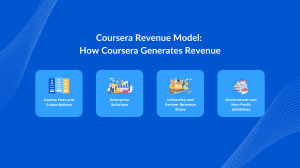
1. Course Fees and Subscriptions:
Revenue is primarily generated through course fees, where learners pay for certificates, Specializations, and degrees. Coursera Plus, a subscription service offering unlimited access to most courses, also contributes significantly to revenue.
2. Enterprise Solutions:
Coursera for Business provides corporate clients with scalable learning solutions. Businesses pay for employee access to the platform, which includes features like custom learning paths and detailed analytics.
3. University and Partner Revenue Share:
Coursera shares revenue with its university and industry partners based on course enrollments and fees. This mutually beneficial model incentivizes partners to provide high-quality content and actively engage with the platform.
4. Government and Non-Profit Initiatives:
Revenue also comes from partnerships with governments and non-profits that fund large-scale educational programs aimed at workforce development and social impact.
By integrating these components, Coursera not only supports a diverse range of learning needs but also builds a sustainable and scalable business model that continues to drive its mission of making world-class education accessible to all.
How to Build an eLearning Platform from Scratch: A Step-by-Step Guide Inspired by Coursera
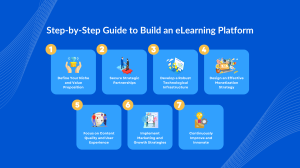
Coursera’s success in the online education market serves as a compelling blueprint for aspiring eLearning platforms. By understanding the key components and strategies that have driven Coursera’s growth, entrepreneurs and educational institutions can glean valuable insights into launching their own online learning platforms. Below, we outline critical steps and strategies inspired by Coursera’s business model that can help you create a dynamic and engaging eLearning platform.
Step-by-Step Guide to Build an eLearning Platform
Step 1: Define Your Niche and Value Proposition
- Identify Your Target Audience:
Start by understanding the specific needs and preferences of your target audience. Are you focusing on professional development, academic courses, or hobbyist learners? This clarity will guide your content creation and marketing strategies.
- Develop Your Unique Value Proposition:
What will make your platform stand out in a crowded market? Coursera excels by offering courses from prestigious institutions and providing flexible learning paths. Determine what unique value you can provide to your users, whether it’s expert-led courses, innovative learning tools, or exclusive content.
Step 2: Secure Strategic Partnerships
- Collaborate with Educational Institutions and Industry Leaders:
Like Coursera, seek partnerships with reputable universities and industry leaders who can provide high-quality content. These collaborations can enhance your platform’s credibility and attract a broader audience.
- Build a Diverse Content Library:
Ensure that your platform offers a wide range of courses to cater to different interests and skill levels. This diversity will help in attracting a varied user base and meeting the educational needs of a global audience.
Step 3: Develop a Robust Technological Infrastructure
- Platform Development:
Invest in building a user-friendly, scalable, and secure platform. The technology stack should support high-quality video streaming, interactive learning tools, and seamless navigation. Technology partners like InfoStride can provide the technical expertise to create a robust eLearning infrastructure.
- Mobile Accessibility:
Ensure that your platform is accessible on mobile devices, as a significant portion of users prefer learning on the go. Responsive design and mobile apps can enhance user engagement and retention.
- Data Analytics and AI Integration:
Implement analytics tools to track learner engagement and performance. Leveraging AI for personalized learning experiences, such as recommending courses based on user behavior, can significantly improve user satisfaction.
Step 4: Design an Effective Monetization Strategy
- Freemium Model:
Offer free access to basic course content to attract users, with the option to pay for additional features such as certificates, graded assignments, or exclusive content. This model has been a cornerstone of Coursera’s success.
- Subscription Plans:
Provide subscription options for unlimited access to course libraries. Coursera’s Plus subscription is an excellent example of how to offer value to users who want broad access to multiple courses.
- Corporate and Institutional Solutions:
Develop tailored solutions for businesses and educational institutions. Offering bulk subscriptions or customized learning paths for corporate clients can be a lucrative revenue stream.
Step 5: Focus on Content Quality and User Experience
- Curate High-Quality Content:
Ensure that the courses offered on your platform are of high quality, engaging, and relevant. Partner with experts in various fields to create content that resonates with your audience.
- Enhance User Experience:
Create a seamless and intuitive user experience. This includes easy navigation, clear course progression, interactive elements, and responsive customer support.
Step 6: Implement Marketing and Growth Strategies
- Leverage Digital Marketing:
Use digital marketing strategies such as SEO, content marketing, and social media to attract users. Highlight success stories, course quality, and partnerships to build credibility.
- Engage with Your Community:
Build an active community around your platform. Encourage discussions, peer interactions, and user-generated content to foster a sense of belonging and engagement.
- Offer Discounts and Promotions:
Attract new users and retain existing ones by offering discounts, free trials, and promotional campaigns. Coursera often uses these tactics to boost enrollment and engagement.
Step 7: Continuously Improve and Innovate
- Gather Feedback and Iterate:
Regularly collect feedback from users to identify areas for improvement. Use this feedback to enhance course offerings, improve platform features, and refine your business model.
- Stay Ahead of Trends:
Keep an eye on emerging trends in education and technology. Innovate by integrating new tools and methodologies, such as gamification, virtual reality, or AI-driven learning, to stay competitive.
Must Read: Udemy Business and Revenue Model Explained
Interested in Building a Platform Like Coursera?
If you’re considering launching your own eLearning platform, following Coursera’s successful blueprint can set you on the right path. Whether you’re an entrepreneur eager to break into the eLearning market or an educational institution aiming to expand your reach, these steps provide a roadmap to building a successful online education platform. Our expertise in eLearning app development can further enhance your journey, ensuring that your platform is equipped with the latest features and functionalities to engage learners and deliver impactful educational experiences.
InfoStride: Your Partner in Building eLearning Platform Like Coursera
At InfoStride, we specialize in helping clients turn their visions of creating impactful eLearning platforms into reality. With extensive experience in custom software development services, we provide comprehensive services that cover every aspect of building and scaling online education platforms.
Our Expertise Includes:
-
Platform Development:
We design and build robust, scalable, and user-friendly platforms tailored to your specific needs. Our technology solutions ensure that your platform can handle large user bases and deliver high-quality content seamlessly.
-
Content Integration and Management:
InfoStride supports you in curating and integrating diverse content types, from video lectures to interactive quizzes. We help you manage your content library efficiently, ensuring it remains up-to-date and relevant.
-
Mobile Accessibility:
Our team specializes in mobile app development services, crafting responsive and mobile-friendly platforms that offer users a consistent and engaging learning experience across all devices.
-
MVP Development Services:
We offer MVP development services, providing you with a rapid and cost-effective way to test your ideas in the market and gather valuable feedback from users. By focusing on essential features and functionalities, we help you create a prototype that demonstrates the core value proposition of your product or service, allowing you to gauge user interest and market demand before making significant investments.
-
Web Development:
We excel in web development services, leveraging the latest technologies and best practices to create dynamic and interactive websites that not only meet but exceed user expectations. From intuitive navigation to visually stunning designs, we ensure that every aspect of your website is optimized for maximum engagement and usability.
-
AI and Analytics:
We incorporate advanced analytics and AI tools to provide insights into learner behavior and personalize the learning experience. This data-driven approach helps in enhancing user engagement and satisfaction.
-
Monetization Solutions:
InfoStride assists in implementing effective monetization strategies, including subscription models, freemium options, and enterprise solutions. We help you maximize your revenue while providing value to your users.
-
Ongoing Support and Maintenance:
Our commitment doesn’t end at launch. We offer continuous support and maintenance to ensure your platform runs smoothly and stays ahead of technological advancements.
Ready to embark on your journey in the eLearning industry? Reach out to InfoStride today to learn more about how we can help you build a dynamic, engaging, and successful online education platform that meets the needs of learners worldwide.
Frequently Asked Questions
1. What is the Coursera business model and how does it generate revenue?
The Coursera business model revolves around providing a mix of free and paid courses in partnership with universities and companies. Revenue is generated through paid certificates, subscriptions to Coursera Plus, enterprise solutions via Coursera for Business, and fully online degree programs. This freemium approach allows Coursera to attract a broad user base while monetizing premium content and services.
2. How can I build an eLearning platform similar to Coursera?
To build an eLearning platform like Coursera, start by defining your niche and target audience, secure partnerships with educational institutions or industry experts, and develop a robust, user-friendly platform. Implement a variety of content formats and create a flexible pricing strategy. Leveraging advanced technologies like AI for personalized learning and analytics can further enhance your platform’s appeal.
3. What are the main features that make an app like Coursera successful?
An app like Coursera succeeds through features such as a diverse course catalog, partnerships with top universities and companies, high-quality video content, flexible learning paths, interactive assignments, and certifications. Additionally, mobile accessibility, user-friendly navigation, and data-driven personalization are crucial to engaging and retaining learners.
4. How does Coursera differentiate itself from other online learning platforms?
Coursera differentiates itself through its strong partnerships with prestigious universities and industry leaders, offering high-quality courses and recognized certifications. Its wide range of content, from individual courses to full degree programs, flexible learning options, and robust freemium business model set it apart from other websites like Coursera.
5. What are some of the biggest challenges in creating a platform like Coursera?
Building a platform like Coursera involves challenges such as securing and maintaining high-profile partnerships, developing and curating diverse and engaging content, ensuring technological scalability and security, differentiating in a saturated market, and creating effective monetization strategies while providing free content to attract users.
6. What other websites like Coursera offer similar online learning experiences?
Other notable websites like Coursera include Udacity, edX, LinkedIn Learning, and Pluralsight. Each of these platforms offers unique features and focuses, such as Udacity’s nanodegrees in tech skills, edX’s non-profit mission and open courses from leading universities, LinkedIn Learning’s integration with professional networking, and Pluralsight’s specialization in technology and creative skills.
7. Why should educational institutions consider creating their own eLearning platforms?
Educational institutions should consider creating their own eLearning platforms to expand their reach beyond geographical limitations, provide flexible learning opportunities, and generate additional revenue streams. By adopting elements of the Coursera business model, institutions can offer a broad array of courses and degrees, attract a global audience, and maintain control over their educational content and brand.


